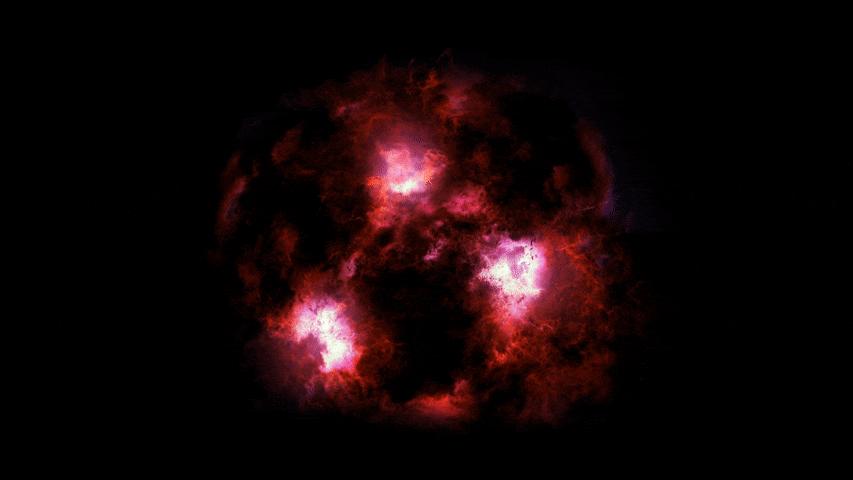When you purchase through connexion on our site , we may make an affiliate commission . Here ’s how it make .
Like the United States of America , the population has been keep its own creation with firework since its beginning — the Big Bang , in the univere ’s case . Now , 243 twelvemonth after the U.S. come into macrocosm and 13.8 billion years after the macrocosm did , NASAresearchers have let out a remote wiz system explode in merry reddish , ashen and naughty luminousness , close to 5 million time promising thanEarth ’s sun .
In a gorgeous newultravioletphoto taken by theHubble Space Telescope , matching bulbs of light explode out of a elephantine whiz system calledEta Carinae . Located about 7,500 light - yr from the U.S. , Eta Carinae actually consist of a pair of asterisk , one roughly 50 time the mass of the sunshine and the other as much as 250 times more monumental . They have been blowing their tops for about 170 years .

Eta Carinae, a distant star spouting twin nebulae of red, white and blue gas, is pumped for Independence Day.
This picturesque clap of gasoline and debris began in about 1837 , when astronomers notice that Eta Carinae hadgrown significantly brighterovernight . This was the showtime of an 18 - year period known as the Great Eruption , during which Eta Carinae concisely became one of the brightest objects in the sky .
This vast atomic number 12 hoop was detected for the first fourth dimension in Hubble ’s late observations of the distant nebula . This 2nd ring of hot gas exist where there should be an empty belt of distance ; its unexpected presence let on that the Great Eruption may have been even greater than antecedently believed , enunciate Nathan Smith , an stargazer at Steward Observatory at the University of Arizona .
" This extra stuff is fast , and it ' ups the ante ' in term of the total vim for an already powerful stellar flack , " Smithsaid in a NASA program line .

Studying the colicky debris squeeze out by Eta Carinae will give astronomers a secure melodic theme of what the Great Eruption looked like , maybe even hinting at what caused that event in the first place . The clock is ticking , as Eta Carinae willprobably erupt againwithin the next million years , this time in a withering supernova explosion . With the Great Eruption cognomen already taken , uranologist will have to get originative when diagnose that larger-than-life show of cosmic pyrotechnic .
in the beginning published onLive skill .
















